Almost all garden plants are susceptible to some type of disease, and lettuce is no exception.
Some can be mildly inconvenient and easy to prevent, while others can destroy crops and infect soil, leading to chronic crop loss if you don’t have the land available to rotate.
If you’re growing your own salad greens for healthy, homegrown salads, it’s a huge disappointment when you discover your plants are showing symptoms of disease.
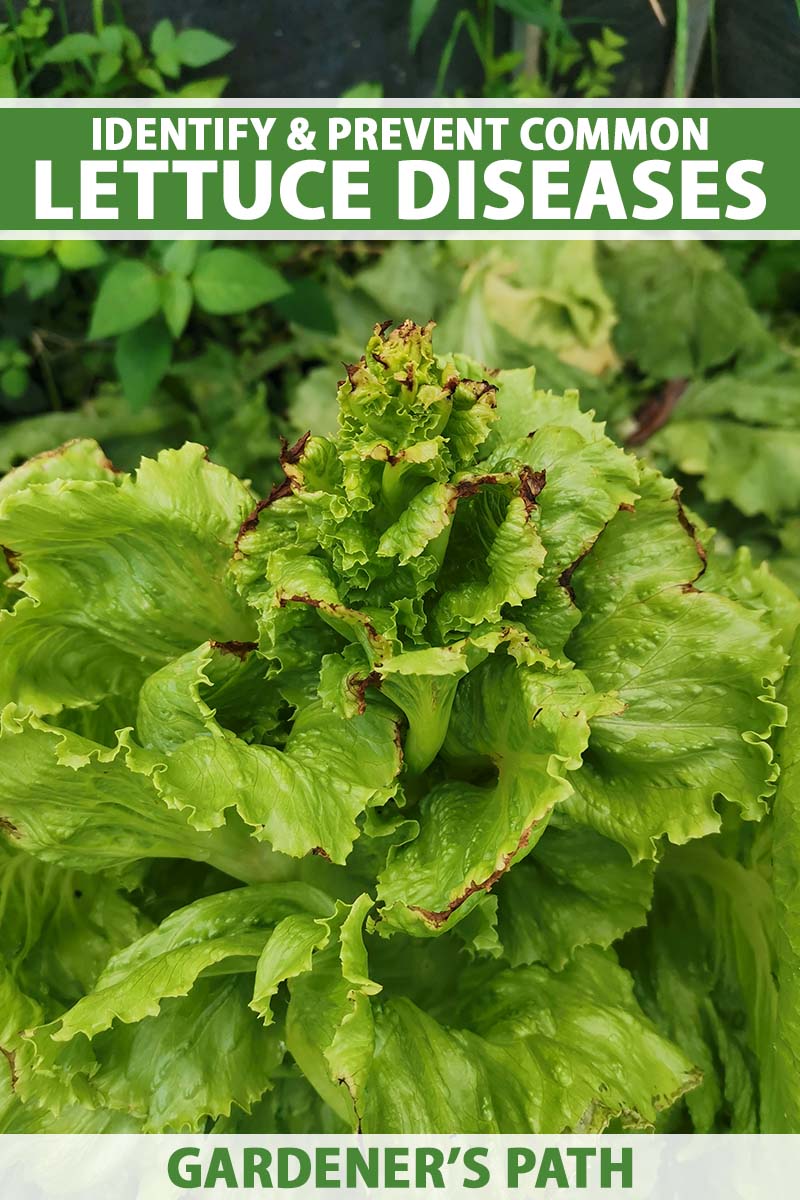
We link to vendors to help you find relevant products. If you buy from one of our links, we may earn a commission.
In our guide to growing lettuce, we cover how to cultivate crispy heads and tender greens in your garden.
In this article, we’ll take a look at what diseases you might see in your lettuce.
Here’s what we’ll cover:
Five Common Lettuce Diseases
1. Bacterial Leaf Spot
The main symptom of bacterial leaf spot is black lesions on the outer leaves, often surrounded by yellow discoloration known as “halos.” These typically appear on mature heads rather than on younger plants.
The primary causes of this disease are types of bacteria from the Xanthomonas and Pseudomonas genera.
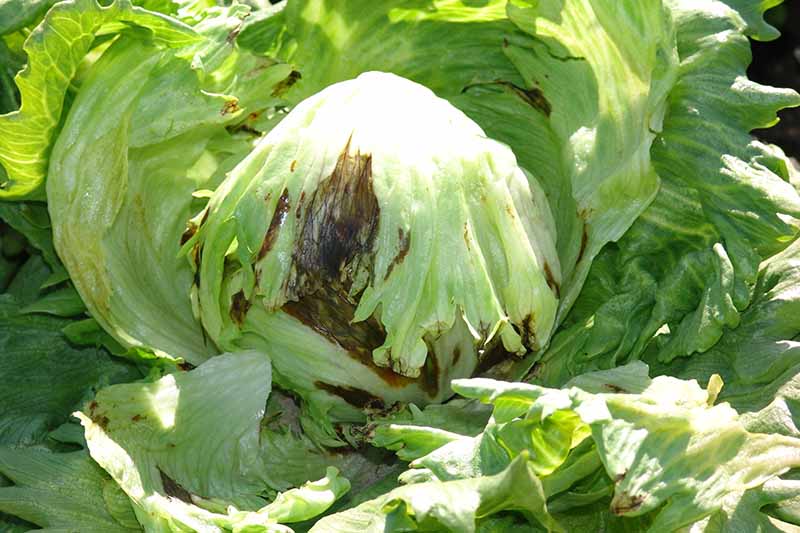
If you see signs of leaf spot, note that the disease is commonly spread by splashback from watering, and that this can be prevented in part by using drip irrigation or watering at the ground level rather than using sprayers or sprinklers.
You’ll also want to avoid overwatering, but be aware that rain may still spread the bacteria.
Another way that the bacteria can be introduced into the garden is by planting infected seed.
These types of bacteria have a very long shelf life of up to ten years, so if you’ve had an outbreak, you should forgo saving seed from infected plants or others grown nearby.
You may be able to kill pathogens that are present on the seed surfaces, even on seed that you’ve purchased, by soaking seeds in a bleach solution to sterilize them.
Place about a tablespoon of seeds in a container, such as a glass jar, and add one cup of hot but not boiling water, and one tablespoon of chlorine bleach.
Allow the seeds to soak for about 15 minutes, and then rinse with cool water until the smell of bleach is gone.
Note that this treatment will only kill pathogens that are present on the outside surface of the seeds, and bacteria could potentially survive under the seed coats. After the seeds have been thoroughly rinsed, spread them out and allow them to dry overnight.
Despite your best efforts, infection can still occur, and the bacteria can colonize very quickly in warm, humid conditions. Increasing airflow and allowing the garden bed to dry out a bit can help to stop the spread.
Prior to the onset of disease symptoms, you can spray a commercial copper fungicide on young plants.
This can help to kill bacteria that have survived seed sterilization, or if you’ve planted from seedlings or store-bought starts that were infected at the time of purchase.
You can find Bonide Copper Fungicide available from Arbico Organics in 16- or 32-ounce ready-to-spray bottles.
Copper fungicide should be used sparingly, as overuse can reduce its efficacy.
Any affected leaves should be removed on sight and disposed of in the trash, or far away from other plants or garden soil.
Infected planting beds should not be planted back to back as the bacteria can live in the soil, and in infected organic debris, for as long as a year.
Rotate crops between beds or leave infected soil unplanted if possible, and be sure to remove weeds in the area as well, as the bacteria can be harbored in the roots, even in plants that are not typically hosts.
It’s also a good idea to observe any other plants in the garden, as leaf spot can affect many other species, including ornamentals.
2. Bottom Rot
Keeping lettuce leaves away from contact with the soil beneath them will aid in preventing some types of infestation and disease. Pests and soilborne pathogens have easier access to your crops when plants lie against the ground.
Opportunistic fungi from the Rhizoctonia genus are extremely common in garden soil, and unfortunately, these thrive in much the same conditions as lettuce does.
It’s particularly aggressive when soil temperatures are consistently between about 75 to 80°F.
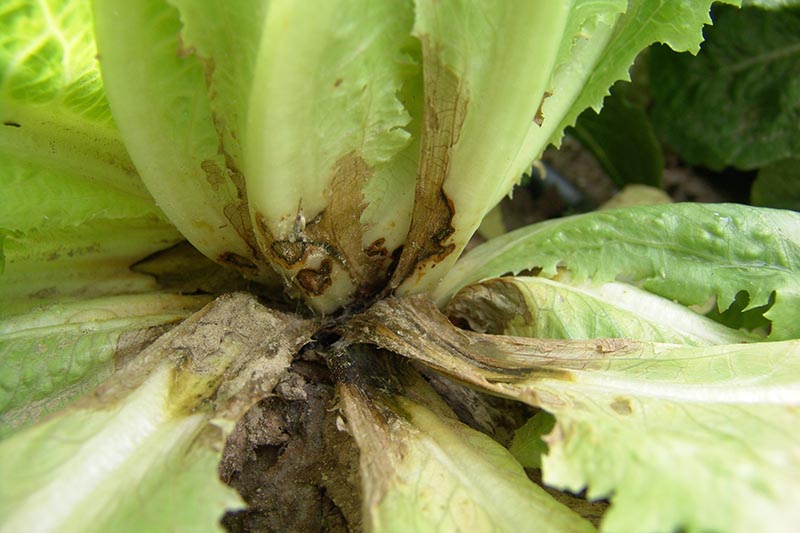
As heads mature, outer wrapper leaves can come into contact with soil where the fungus is present, and it’s very easy for it to begin to colonize on plants.
This fungus can also survive between crops, so if you’ve had an outbreak, it’s best to rotate your planting beds.
Bear in mind, though, that some strains can infect other types of crops – such as potatoes, onions, and even weeds – so it’s also important to keep garden beds well weeded between planting.
If your plants have been infected, you’ll start to notice a brown or rust-like coloration, often developing into scabby spots, on the midribs.
Eventually, slimy sections will develop that may overtake most of the underside of the head or on the stems.
If left to persist, leaves will wilt and yellow, the rust coloration will change to black, and the slimy texture will dry to a powder as the plant dies.
Another telltale sign of bottom rot is a musky, moldy smell that you’ll be able to notice as the fungal damage becomes apparent.
Removing affected leaves may help to stop the spread through the rest of the head, but reinfection can still occur.
As with many types of fungal or bacterial disease that affect the garden, there is no known cure for bottom rot, and prevention is key.
Mounding soil at the time of planting can assist in keeping the leaves of head lettuce in particular from coming into contact with the ground.
A simple, mounded row of four to six inches is enough to elevate heads, and this also makes it easier to prevent leaves from sitting in water that has collected on the ground, where the fungus can also be present.
It’s sound advice to rotate crops each season, regardless of whether you’ve had a disease outbreak. When a fungal infection is present, it can help to till planting beds deeply prior to planting, and after harvest.
Allow tilled soil to remain exposed to air and sunlight, as drying it out can kill some of the fungi present in the soil.
Next, you can treat the soil with fungicide, spraying according to package directions, or you may choose to solarize the soil by laying clear plastic sheeting over the tilled area.
The tarp should remain in place for two to six weeks, allowing the heat of the sun to build up throughout the day. Temperatures will increase under the tarp to a degree that the fungus can not survive.
Alternatively, you can treat the soil in the planting area with a product containing Trichoderma harzianum, a beneficial fungus that attaches itself to the plants’ roots to prevent disease pathogens from taking hold.
RootShield Biological Fungicide
It’s available as RootShield Home and Garden, from Arbico Organics. Note that this product will not treat an existing infection, but will prevent the pathogen from taking hold.
Follow package instructions and apply at planting time, and repeat as recommended.
3. Damping Off
You may observe your young seedlings suddenly falling slack against the soil, and note that the stems are brown and wilted, unable to support the plant. In some cases, seedlings may fail to emerge altogether.
As mentioned previously, seedlings in this condition could be accompanied by fungus gnats, which may be your first clue even before plants begin to die off.
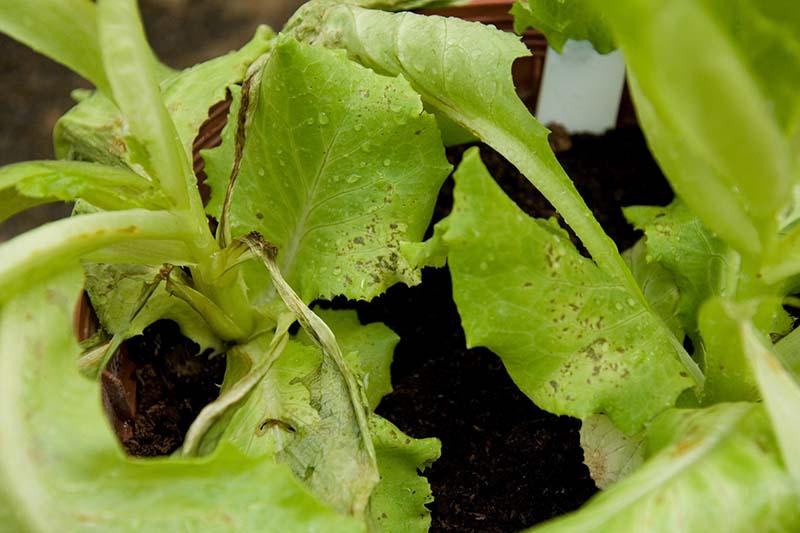
If you see gnats on plant leaves, the soil surface, or floating in the air above the sprouts, it may be too late.
Damping off is caused by fungi that thrives in cool, wet environments such as garden soil. While it most commonly affects seedlings, it has also been known to damage mature plants, sometimes leading to root or crown rot.
Most of the time, pathogens are present in store bought garden soil at the time of purchase. In humid environments, or if soil is kept very wet, the fungi can develop.
This type of fungi can infect most types of seedlings, and not just lettuce, although lettuce seedlings are fairly delicate and can be killed very quickly when infected. More than one variety of fungi can cause this condition, specifically Fusarium and Rhizoctonia species.
Symptoms of damping off can include the previously mentioned failure of seedlings to emerge; thread-like wilting of stems; yellow or brown cotyledons; presence of fungus gnats; or white, mold-like formations on the surface of soil, sometimes surrounding the base of the seedlings.
Most symptoms will be seen between planting and the growth of the first true leaves.
Planning ahead can be an excellent preventative with regard to damping off, as any tools or pots that have been exposed can potentially spread the fungus to new crops, so it’s important to disinfect implements or containers that have been exposed before reusing them.
Rubbing alcohol or bleach can be used to sterilize tools; however, be aware that bleach is corrosive to metal implements.
Always use new potting soil for planting and use heat mats to keep soil warm, as cool, wet soil is a breeding ground for fungi. Temperatures above about 70°F are ideal for control. Use room-temperature water when watering plants as well.
Consider using a grow lamp to increase available light, which can not only assist plants in becoming established, but can warm and dry out soil at the surface level, dissuading gnats and fungi from taking up residence. Good airflow also helps.
Don’t add fertilizer to your potting mix, as this just encourages fungi to develop, and won’t aid in plant growth until plants have developed their first true leaves.
Sprinkle ground cinnamon on the surface of the soil as this not only deters gnats, but it also acts as a natural fungicide.
Don’t transplant too soon if there are no signs of disease. Wait to transplant until your lettuce seedlings have developed a large enough root system to produce their own fungicidal compounds.
This typically takes a few weeks after the seedlings have emerged, and the larger the root system, the better.
If you notice symptoms developing, you can water your plants with a mix of three parts water to one part hydrogen peroxide, which can help to aerate the soil and kill fungi.
If you’ve caught signs of development of the disease early enough, you can transplant seedlings out of infected soil and into new, clean pots, being sure to follow the above steps for preventative care.
Learn more about damping off in our guide.
4. Downy Mildew
In cooler environments, or areas with high daytime humidity and low overnight temperatures, you may notice downy mildew growing on your lettuce leaves.
Lettuce that is exposed to long periods of cool, wet temperatures is highly susceptible to this fungus-like infection.
Symptoms of this disease include yellow or brown spots on leaves; wilting; and the development of fluffy mold, typically on the underside of leaves.
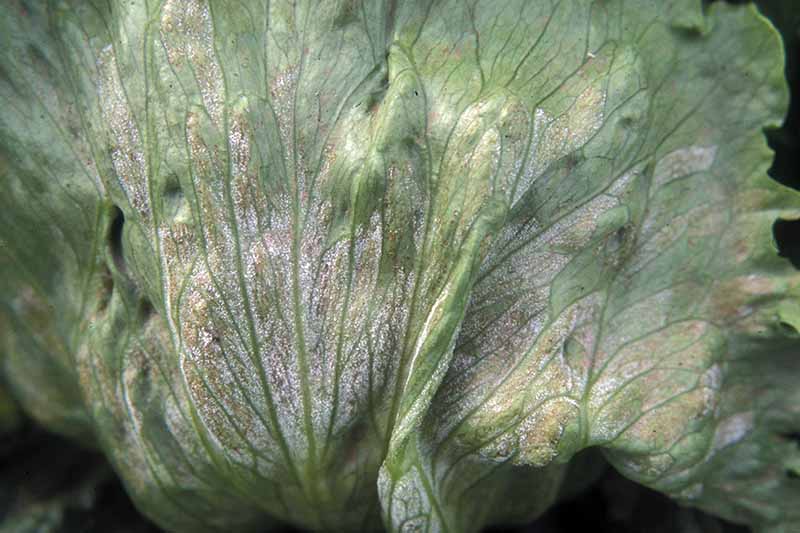
It’s important to note that downy mildew can visually appear very similar to powdery mildew.
However, powdery mildew is caused by fungi, whereas downy mildew is caused by water molds (oomycetes) in the Peronospora, Plasmopara, and Bremia genera. Treating with a fungicide will not correct a downy mildew problem.
Once symptoms of this disease are noticed, it’s best to remove affected leaves and destroy them. If a large portion of the head is affected, it’s best to dispose of it quickly to prevent the spread from plant to plant, or into the garden soil.
The best treatment is prevention. Plan your garden space to allow adequate distance between plants, as this can help to prevent more than one type of disease.
Plants that don’t have enough room can transmit disease and infestation very easily. Check your seed packet for spacing information.
Avoid watering heavily during periods of cool temperatures, and don’t allow water to sit on leaf surfaces. Be sure that loose, low-hanging leaves are not laying against the soil underneath, or pressed tightly against other plants.
If possible, use drip irrigation that allows water to seep directly into the ground rather than wetting the leaves, or water at ground level.
Increase air circulation if possible by using a fan or blower, as this will keep plant surfaces drier and help them to dry more quickly.
Any time disease has affected your garden, it’s best to rotate susceptible crops to avoid planting in areas where disease pathogens may still be present.
5. Lettuce Mosaic Virus
Mosaic virus is unfortunately very common in the home garden. It can be spread through infected seed, or transfered from plant to plant by insatiable aphids as they puncture plant leaves to extract fluids.
In lettuce, symptoms of infection include stunting; chlorosis or bleach-like spotting; dull, misshapen leaves; blistering; and ragged leaf margins. In short, lettuce mosaic virus is relatively obvious and easy to spot once you know what to look for.
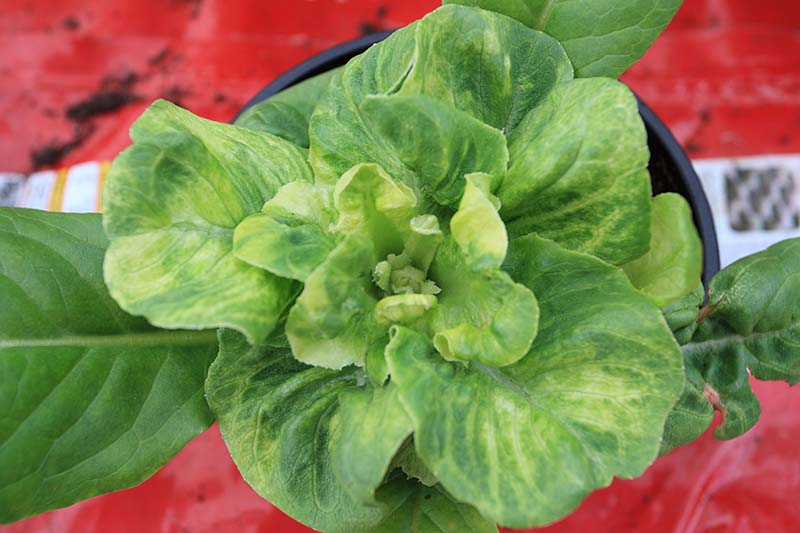
The term “mosaic” comes from the yellow-green mottled color of infected leaves. Note, however, that symptoms can look different depending upon your seasonal climate, so you may not see all of the symptoms described here.
In humid climates, discoloration is more common, whereas in cooler, drier climates, you may have less of an issue with the virus altogether.
After detecting initial signs of infection, first and foremost, carefully comb through your plants for the presence of aphids. You can control them as described in this guide, and you’ll want to do so posthaste.
Bear in mind that both aphids and mosaic virus can spread across species, so if your lettuce is showing symptoms of either, you’ll surely want to check in on neighboring crops. Spinach, peas, and all varieties of lettuce are susceptible.
The Potyvirus that causes mosaic virus is typically spread through the use of infected seed, so once the aphids are dealt with, if you started your lettuce from seed, you may want to discard any that remains.
While your lettuce will still be edible even after being infected, you may not get the chance to consume it as the virus can kill crops if it worsens.
Unfortunately, there is no cure for mosaic virus. The only real treatment is prevention.
Be sure to weed planting beds well to avoid having infected weeds spreading through the garden. Never harvest or plant seeds produced by infected plants, and keep a careful watch for aphids, especially if any of the plants in your garden are showing symptoms of the virus.
Don’t Let Lettuce Diseases Get You Down
Lettuce is generally easy to grow and if you follow good gardening practices and the tips in this guide, you should be harvesting your own homegrown greens without incident.

Have you battled any of these lettuce diseases? Let us know in the comments section below!
And for more lettuce-growing know-how, have a read of these guides next:
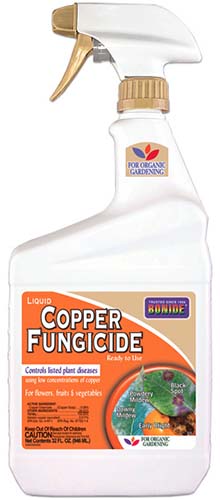
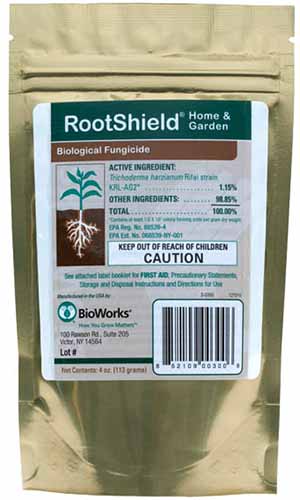
I have been suffering from this lettuce disease mosaic virus and don’t know how to control it
Hi Seidu, I’m sorry to hear that you’re dealing with mosaic virus – it can be a very frustrating problem. The first thing to do is look for pests that may be the culprit in spreading the disease. Aphids, mites, and other pests that feed off of the interior fluids can transmit the virus from plant to plant. Be sure that you rotate the crop to a different location or leave it out of your plan for next year if this is a common issue and remove any weeds growing nearby since they can harbor the virus as well. Remove… Read more »
Hi. I’m trying to determine the cause of multiple small spots that I have found on some of my loose-leaf lettuce plants. They don’t seem similar to any of the diseases listed, nor do they seem to match the main pest damage pictures. Some of my plants have multiple spots and most other plants are unaffected. Spots appear to be between 1 and 2 mm in size. The area inside of spots appears to be solid.
Thanks much,
Lisa L.
Can you share photos, Lisa? What color are the spots? Do you water your lettuce from overhead, and have you applied any type of pesticide her fungicide to your plants?
Hi, thank you for this interesting article.
I have attached photos of lettuces grown in NFT hydroponics system.
Can you help me identify the disease and how can it be controlled or cured?
Hello Irfaan, I’m glad you found the article useful! Based on these photos and the fact that you’re growing in an aquaponic system, I would judge this as a result of a bacterial leaf spot outbreak. Even though this disease is more common in mature heads, growing in an environment where water is used as the substrate can cause much faster spreading when bacteria is present, so it can easily overtake younger plants as well. Unfortunately, it looks like it’s too late for these plants, so they should be removed and destroyed. Since bacteria can live inside and be circulated… Read more »
This is what happens to my lettuce only, it does not affect the other vegetable in the garden. Please what can I use to remedy it, thanks
Hi Tochi, thanks for your question! I’m sorry you’re having this problem. It’s a little difficult to tell – are the plants cleanly cut at the stems when you find them, or did you cut them off there yourself? At first glance, the damage most closely resembles either anthracnose or bottom rot. Both diseases are caused by fungi and commonly spread through spores contained in water, so if you’ve had a problem with either, it could be present in your soil, water, or garden debris. They’re very fast acting and can level your plants in a matter of days. If… Read more »
I have a problem with my lettuce (leaf) since last year.
It look exactly damping off disease. My spinach nearby seems have same problem too. What can I do?
Thanks, Monica
Hi Monica, can you share a picture so we can take a look? Thanks!
Hello Kelly,
I am growing in a hydroponic DWC system and I noticed some of my older Romaine lettuce inner leaves are becoming cone-shaped and kind of rigid. I am not sure if it is due to premature bolting, high winds lately, some disease or nutrient deficiency. There are some brown spots on some of them but not all so leaf spot may or may not be the culprit. But this is the first time I am seeing this type of phenomenon. Any help would be appreciated.
Hylan
Mature romaine is typically firm and cone shaped, with some looser leaves around the outside. Can you share a close-up image of the brown spots you referred to? And where are you located?
Overall, heading lettuces like romaine respond best to higher fertility in this type of system than you might provide for loose leaf types, but I’m afraid I’m not able to offer any more specific recommendations.
Here is a pic.
My romaine lettuce has a black “mold” only on the edges, and mostly on the inner leaves, but just on the edge. It looks like the photo on the 1st page of this blog, only a very dark brown. I didn’t see a caption for that 1st photo. What is it?
Are you able to share a photo, Barb? I’d guess that this is probably not mold, but rather a physiological condition known as tipburn. Rather than being a sign of disease, this is a physiological condition related to insufficient calcium uptake due to irregular irrigation. Be sure to provide supplemental irrigation as needed during periods of heat or drought to prevent water stress.
Hi Kelly,i find your information regarding different vegetables and plants very informative and intereting.you have great knowlegde about the plants.i am really inspired and i hope to start gardening and having my own healthy kitchen garden….much respect and prayers for you .
Thanks for reading, zuk! Glad you found the information helpful.
what is this type of disease or insects bit
It’s hard to say exactly without more information about the growing conditions, but this looks like it could be tip burn. This occurs when lettuce can’t take up enough calcium to support the growth. If it is tip burn, it can just be cut off and the leaves are fine to eat.